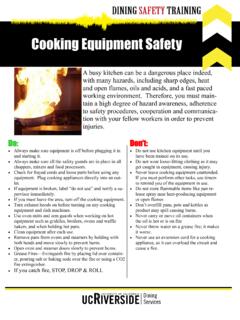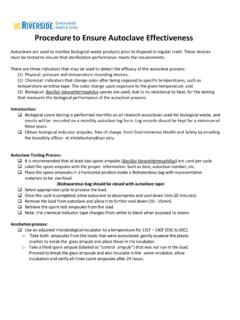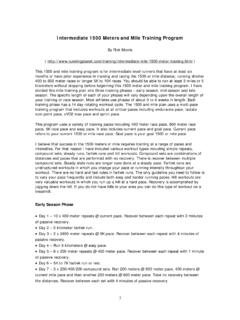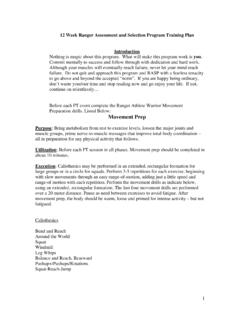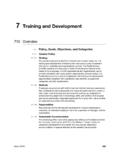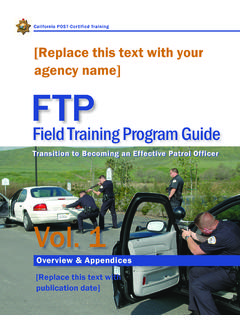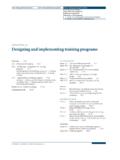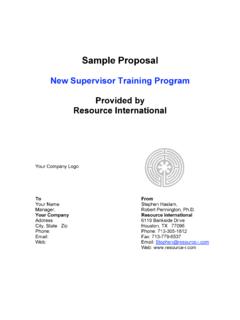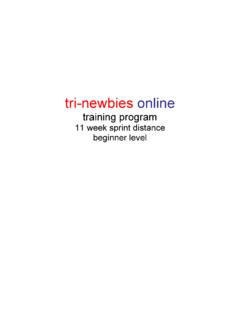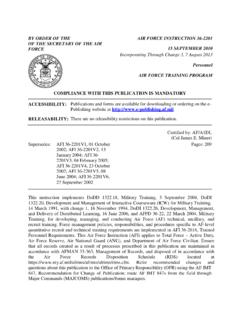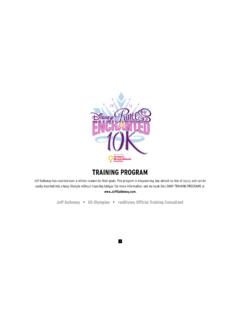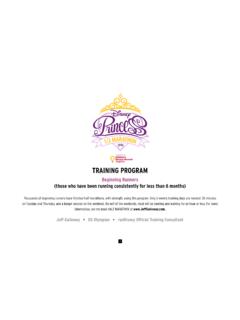Transcription of Best Practices Standards, and Guidelines
1 EH&S University of California STEW Systemwide training and Education Workgroup training best Practices standards and Guidelines Page 1 EH&S training best Practices , standards , and Guidelines University of California Acknowledgement Project Team Members Julie Koppel, Project Leader University of California Santa Barbara Brooke Vaughn Lawrence Berkeley National Laboratory Jessica Drew de Paz, University of California Irvine Kevin Creed University of California Merced Rich Belmontez University of California San Diego Janette De La Rosa Ducut, University of California Riverside Dale Thrasher University of California Santa Cruz Systemwide training and Education Workgroup (STEW) About STEW The Systemwide training and Education Workgroup (STEW) is composed of Environmental Health and Safety (EH&S) representatives from each of the University of California (UC) campuses, national laboratories, and Office of the President (OP).
2 The group s purpose is to collaborate on projects and programs shared in common. The workgroup is responsible for ensuring that systemwide training and education initiatives and projects are aligned with organizational values, goals, and objectives and support both the UC mission and the EH&S strategic plan. The workgroup identifies opportunities for collaboration and encourage the sharing and standardization of training that is based upon accepted best Practices , standards , and Guidelines . The workgroup is also responsible for reviewing systemwide training projects and making recommendations to the EHS Leadership Council.
3 Members Agreed and adopted April 21, 2011 in Merced, CA. Revised July 8, 2011 Thor Benzing Agricultural and Natural Resources (ANR) Brooke Vaughn Lawrence Berkeley National Laboratory (LBNL) M. Tim Bean University of California Berkeley Kelly Duncan University of California Davis Karin Wasler University of California Los Angeles Kevin Creed University of California Merced Janette De La Rosa Ducut, University of California Riverside Rich Belmontez University of California San Diego Henk Mar University of California San Francisco Julie Koppel University of California Santa Barbara Kitty Woldow University of California Santa Cruz Erike Young University of California Office of the President Page 2 EH&S training best Practices , standards , and Guidelines University of California EH&S training best Practices standards and Guidelines Introduction The University of California (UC)
4 Acknowledges its obligation to provide Environmental Health & Safety (EH&S) training , ensuring the skills necessary for safe and efficient support of the University mission. In providing comprehensible training to such a large and diverse population, due attention must be paid to barriers such as levels of literacy, learning abilities, and language. The Occupational Health and Safety Administration (OSHA) has also recognized the potential risk that lack of comprehensible training poses to workplace safety. Thus, OSHA stipulates that training be presented in a language, and at a level of comprehension, which the participant readily understands.
5 The lack of best Practices , standards , and Guidelines on how to provide training in this manner may result in inconsistent implementation and confusion across the University. Policy Successful completion of Environment, Health, Safety, Emergency, and/or Risk Management training shall facilitate learner comprehension. training shall be developed, delivered, and evaluated such that the training needs of the target audience and any barriers to comprehension are addressed by the training program. Purpose The purpose of this document is to establish UC best Practices , standards , and Guidelines for EH&S training as required by regulation, policy, or job performance in a readily understandable format.
6 These Practices will take the form of standardized methods and acceptable criteria that facilitates learner comprehension. standards and Guidelines will be established within the framework of an effective training program. Scope These best Practices , standards , and Guidelines would apply to all EH&S training activities as required by regulation, policy, or safe job performance. These Guidelines are not intended to prevail where more stringent regulations, Guidelines or criteria for training is available or required. Program Elements The elements of an effective training program include adequate: 1.
7 Staffing 2. Resources and Facilities 3. Course Development 4. Delivery 5. Evaluations 6. Records best Practices , standards , and Guidelines are outlines within each of these program elements in detail on the following pages. training Program Elements Staffing Resources and Facilities Course Development Delivery Evaluations Records Page 3 EH&S training best Practices , standards , and Guidelines University of California Staffing There are two major staffing roles: training Manager and Instructors. training Manager Each training program should be under the direction of a training Manager who is responsible for the program.
8 This person s role is to provide leadership, and assure the usefulness of appropriate health and safety training programs . The training Manager maintains the program elements of adequate and competent staffing, resources and facilities, course development, training materials, evaluations, and records management. Experience. The training Manager should have a minimum of two years of training and education experience in developing and delivering worker safety and health training (or equivalent). Responsibilities: Review of training materials. The training Manager should ensure the review of all training course materials and other training aids prior to their initial use and as needed thereafter.
9 These include course syllabi, handouts, manuals, instructor manuals, audiovisual aids, enhanced technology methods, demonstration and hands-on equipment, and other such training materials. This review is to ensure the technical accuracy of the materials against requirements by federal and state agencies ( , Cal/OSHA, CDC, FEMA, NFPA, EPA), as well as UCOP and campus specific requirements. Evaluation of Program. The training Manager should develop and maintain a program evaluation plan. At least annually, the training Manager should modify the program to address identified deficiencies (based on course evaluations), relevant new standards or regulations, or new training methods and technologies.
10 Program evaluations should address the key questions in the section on Evaluations. Instructors Instructors are subject matter experts who deliver content in a classroom setting, or instructional designers who deliver content online, under direction of a training Manager. Experience. Some OSHA standards ( , 29 CFR ) require trainers to be qualified to instruct about the subject matter that is being presented in training . Instruction should be done by qualified persons. The ANSI standard defines a competent training professional as a person prepared by education, training , or experience to develop and implement various elements of a training program.



